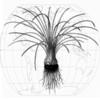| Publication Type: | Journal Article |
| Year of Publication: | 2004 |
| Authors: | Z. He, Wang, H., Li, J., Ye, Q., Taylor, W. C. |
| Journal: | American Fern Journal |
| Volume: | 94 |
| Issue: | 4 |
| Pagination: | 183 - 195 |
| Date Published: | 2004/// |
| Abstract: | Chromosome behavior during meiosis of the tetraploid Isoetes sinensis was observed to be similar to that of basic diploid Isoetes species. This observation was consistent with the previous report that polyploid species of Isoetes are allopolyploids. Meiosis was generally similar in both megaspore and microspore mother cells, but differences were observed. Due to the smaller size of the microspore mother cells, during prophase I, chromosomes are not as dispersed as those in megaspore mother cells. Cytomixis was observed in all stages of meiosis in microspore mother cells, but it was not seen at any stage of meiosis in megaspore mother cells. Cytomixis, lagging chromosomes, chromosome bridges, chromosome fragments, and micronuclei, observed during meiosis in I. sinensis, can affect sexual reproduction, but it does not appear to be a major cause of population decline in this species. The major cause of decline is habitat degradation from human disturbance. The few remaining populations of the Chinese quillwort are fragmented and the numbers of individuals contained in these populations dwindle as a result of habitat degradation. Conservation efforts are needed to save I. sinensis from extinction. |
| URL: | http://www.scopus.com/inward/record.url?eid=2-s2.0-11444270683&partnerID=40&md5=e3b19a6dd117ccd20573e526dceb63bf |
